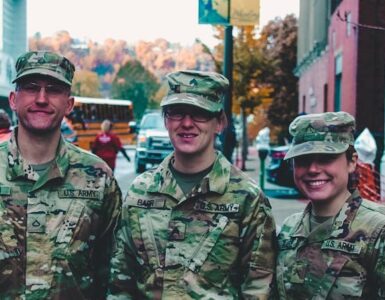According to CollegeBoard, the number of students taking the Advanced Placement Computer Science Principles exam is increasing. Fastest-growing among them are female and underrepresented minorities.
Science Foundation Arizona, along with other organizations in the state, works to effectively expose underserved minorities to computer science.
“We noticed that a lot of kids, even going to the university, still weren’t sure what [computer science] was,” Linda Coyle, Science Foundation Arizona director of education, said.
Coyle, who works through Science Foundation Arizona to add STEM and computer science education to the K-12 sector, said, “We needed to look at opportunities that provided computer science to schools and districts,” Coyle said. “So, three years ago we reached out to one of the nonprofits, which is code.org. And Science Foundation Arizona partnered with Grand Canyon University and became the code.org regional partner.”
With the help of grant funding awarded to Science Foundation Arizona, a cohort of Arizona teachers participate in five days of summer training and quarterly workshops throughout the year.
Many students who benefit from the foundation’s initiatives are from underserved minorities, specifically Native Americans. Additional funding enabled Science Foundation Arizona to train not only high school students, but kindergarten through eighth grade.
“We know that this method works as long as you can start the kids young,” Coyle said. “You have to build the pipeline, you don’t necessarily have to offer the K-six students a day-to-day computer science course, but you definitely have to integrate it. You can add the computational thinking, all the different problem-solving skills.”
Coyle explained that regularly exposing Native American students to computer science is an effective way to pique their interest in the subject.
“What we found was that on many of your native American reservations, we had people that were coming in and doing boot camps. A business would come in for three or four days and they’d be on the reservation and they’d teach some basic programming, or some basic coding. They’d get them all excited, and they’d get all jazzed up and all interested, and then they’d go away.”
Coyle explained that while the programs are helpful, many Native American students do not have the “tools necessary” to continue their interest in computer science after the programs end.
Kindergarten through eighth grade education on the native American reservations is federally funded, so Arizona tax dollars cannot be applied to those schools. Because of this, Science Foundation Arizona received grant funding to expose the students to computer science.
This allows the foundation to “provide computers and programming and after-school clubs.”
Exposing underserved Native American students to computer science opens a variety of doors for their future endeavors.
“If you know computer science, if you know how to program, if you know how to code, if you know data acquisition, if you know any type of cybersecurity, as long as you have internet or broadband you can live anywhere. We already have a great broadband initiative here in Arizona, and if we can bring the broadband up to [Native American] areas we have a potential of providing jobs.”
















Add comment